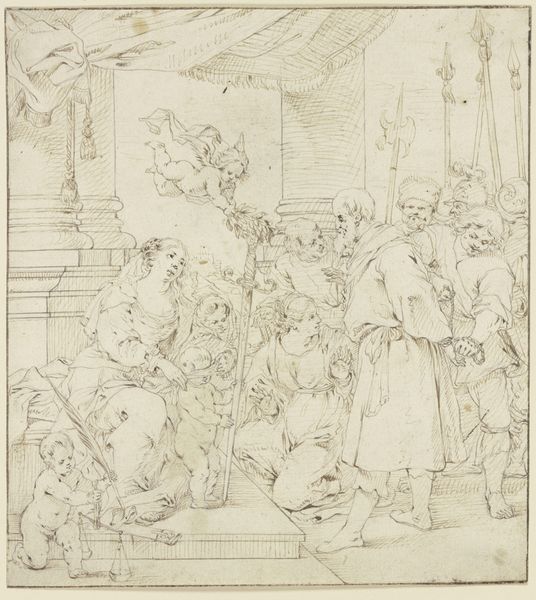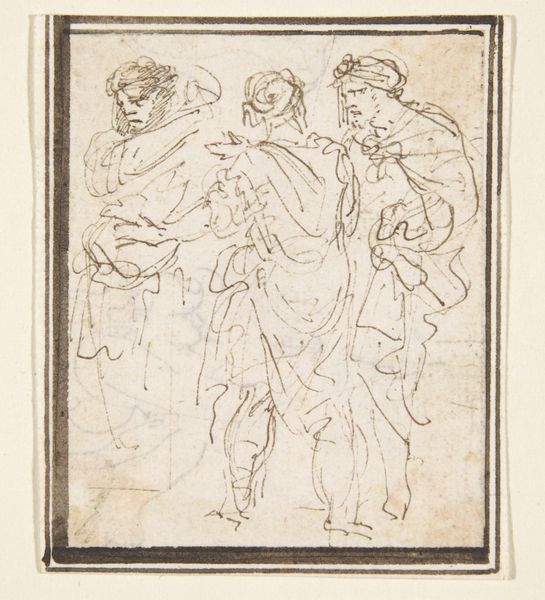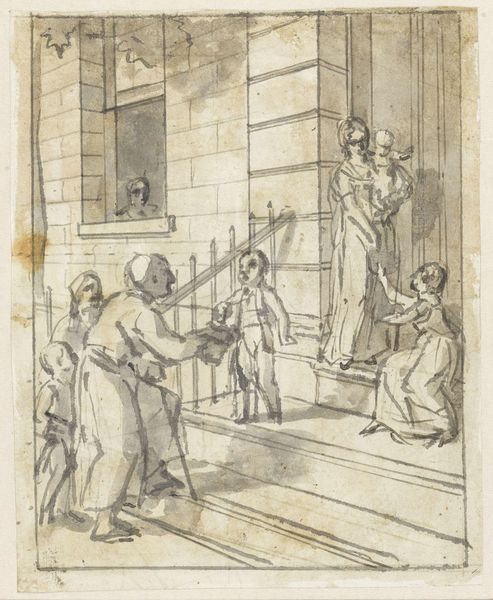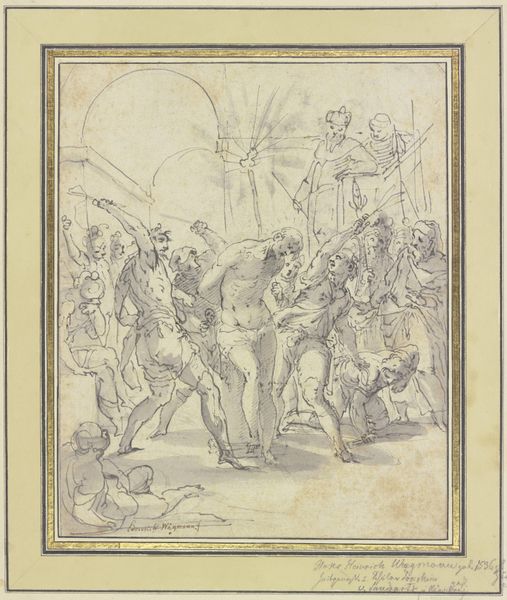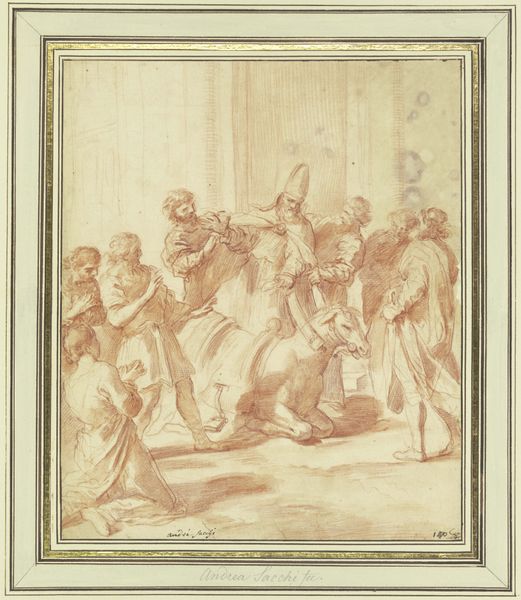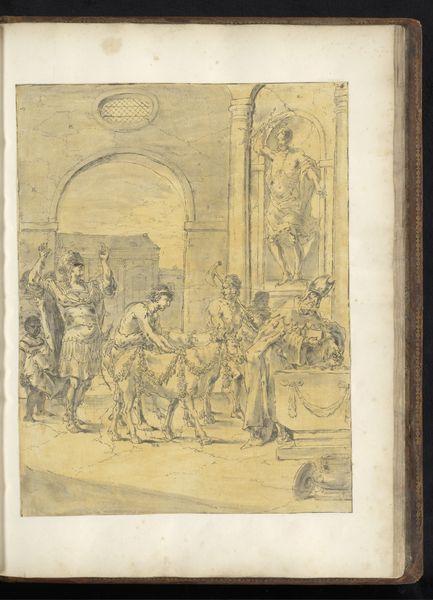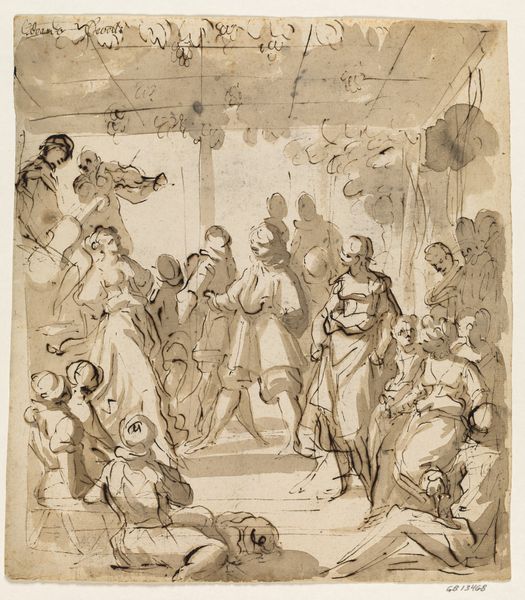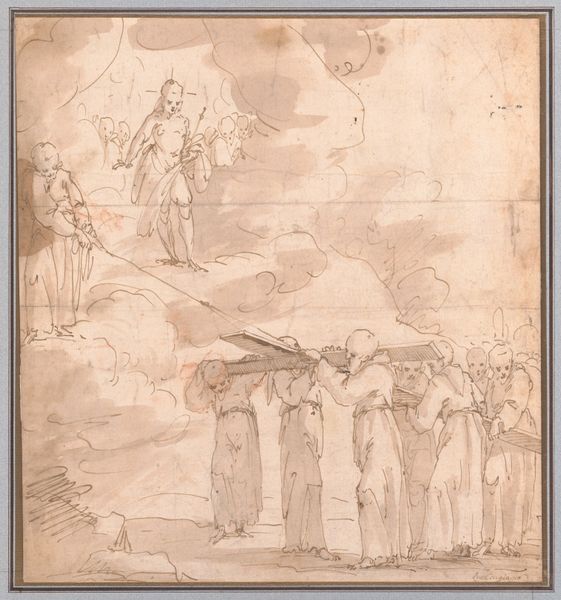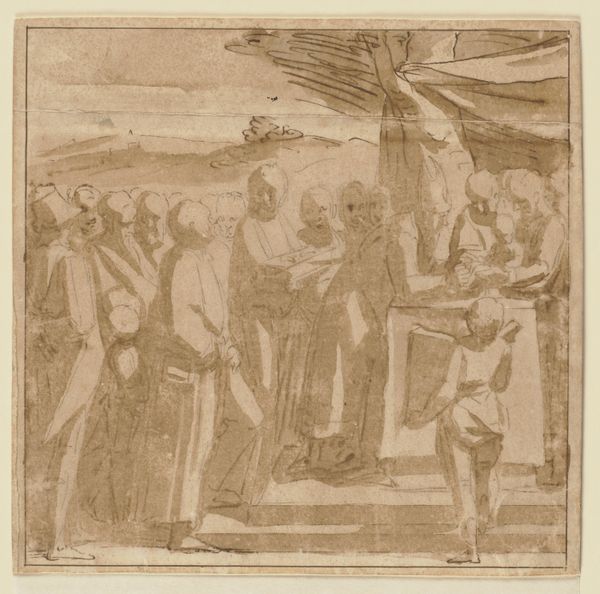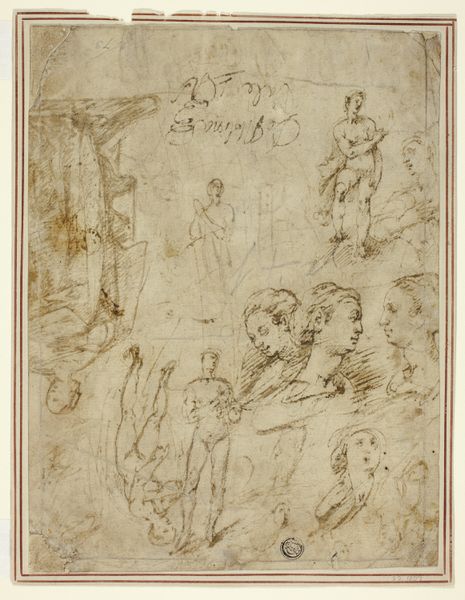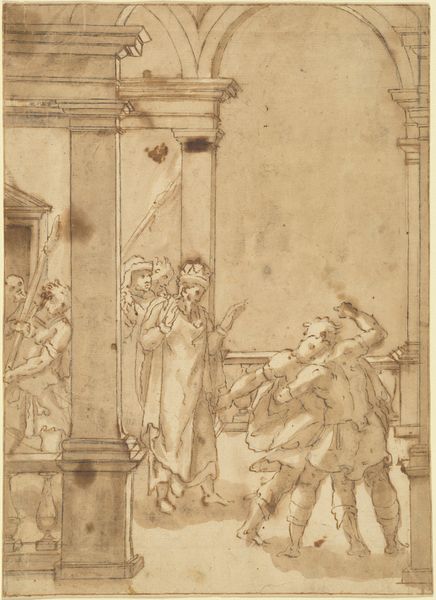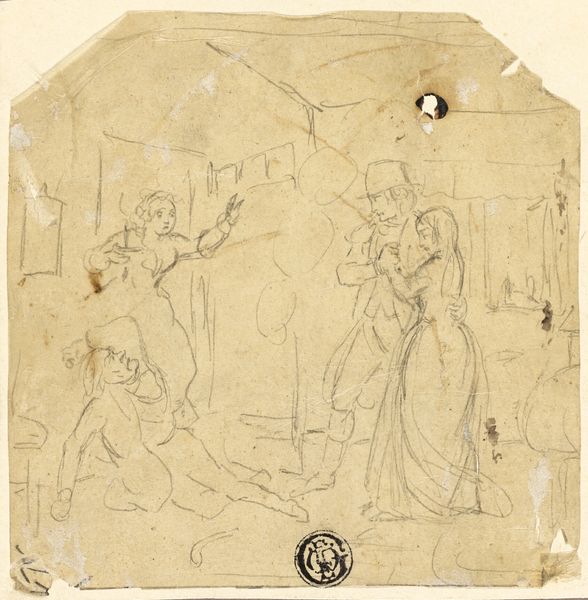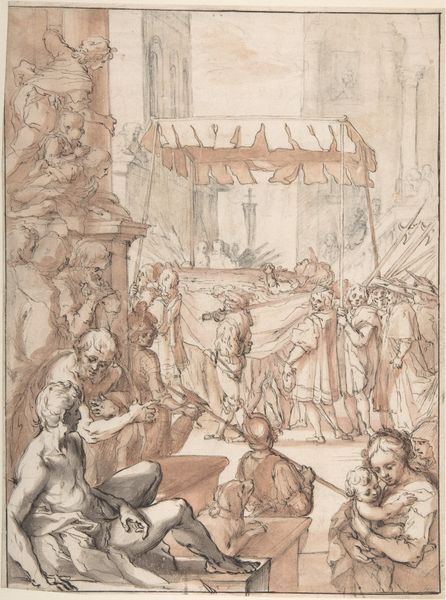
Saint Benedict Exorcising Demons from a Young Woman c. 17th century
0:00
0:00
drawing, paper, ink
#
drawing
#
baroque
#
etching
#
figuration
#
paper
#
ink
#
history-painting
Dimensions: 8 7/8 x 9 1/4 in. (22.5 x 23.5 cm) (sheet)
Copyright: Public Domain
Curator: We’re now observing a 17th-century ink drawing by Ventura Salimbeni, "Saint Benedict Exorcising Demons from a Young Woman," housed here at the Minneapolis Institute of Art. Editor: Right away, I see… chaos, honestly. A swirl of bodies sketched with what looks like desperate energy. You can practically feel the air crackling. Curator: Indeed. Note the use of line. Salimbeni masterfully employs rapid, gestural strokes to convey not just form but also the emotional and spiritual turmoil of the scene. The architectural backdrop, though sketched, provides a rigid structure against which the figures writhe. Editor: The contrast is powerful. The rigid lines of the architecture really highlight the wild movement of the figures. It's like he's saying the church—those cool columns, that arch—contains, maybe barely, this messy human drama. The lightness of the ink lets your imagination fill the negative spaces, almost like the figures could dissolve at any moment. Curator: Precisely. This delicate balance speaks to the Baroque aesthetic of the era. Consider the diagonal axis connecting Saint Benedict’s raised hand to the contorted figure of the young woman. It’s a visual conduit, focusing our gaze on the act of exorcism. Notice the semiotics of power and control at play through gesture. Editor: See, I love that detail! It feels deeply human. Exorcism – such a fraught thing, yet Salimbeni makes it intimate here. You almost miss it amongst all the wild gestures! And those floating figures up top – are those the demons? Or perhaps celestial witnesses? It really puts that cherry on top. Curator: A question intentionally left open. Salimbeni provides us not with a literal depiction, but with a study of the emotional and spiritual states involved. The ink, its tonality varying, achieves depth and dramatic lighting effects too, wouldn't you say? Editor: Absolutely! A single color doing all this work. It is so smart. Makes me think about how much you can suggest with so little... It is wild that, even centuries later, one glance evokes the kind of struggle for control over the spiritual and the physical worlds. Curator: Precisely, a testament to Salimbeni's vision. A concise display of Baroque sentiment and human turmoil, no? Editor: Indeed!
Comments
minneapolisinstituteofart almost 2 years ago
⋮
Many early collectors of drawings stamped the works in their possession with a personal collector’s stamp. This anonymous Italian drawing passed through at least five different collections in the seventeenth and eighteenth centuries (see provenance below). Collectors often annotated their drawings with inventory numbers, price codes, and the name of the artist they thought drew the work. Artists rarely signed drawings before the eighteenth century, certainly not informal sketches like the present sheet. The attribution of this drawing to the Sienese painter Ventura Salimbeni (1568–1613), which is inscribed on both the mount and the drawing, was made by a later owner. That this work was in an Italian collection of primarily Florentine sixteenth and seventeenth-century drawings suggests that it may be Florentine instead. There are many repairs and extensive restorations throughout the sheet, making it difficult to identify its original author. It was in England by the mid-17th century, perhaps as early as 1657, if the star stamp in the lower right corner can be identified with Jerome Lanier, who died that year [see Jeremy Woods 2003]. It was certainly in England before Nicholas Lanier's death in 1666. The co-existence of Lugt 2736 and 2885 would seem to establish a terminus ante quem of perhaps 1657, or more securely 1666, for the dissolution of the unidentified Florentine collection. Every mark on this mount is unclear or rubbed, and condition issues leave open the possibility that this drawing was laid down into an unrelated mount.
Join the conversation
Join millions of artists and users on Artera today and experience the ultimate creative platform.
